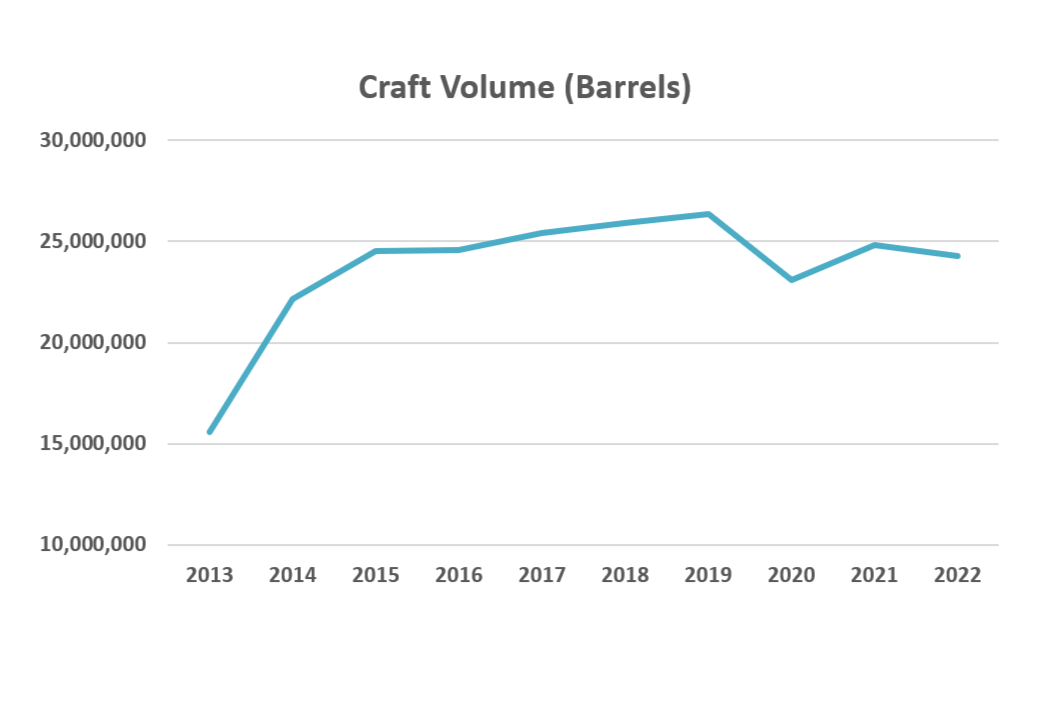A Bubble Versus a Mature Market
I am enjoying a “soft vacation,” which means scaling back work as much as possible while sticking close to home. Most of today’s post dates to a dozen years ago—July 8, 2013. Because of recent news, it is especially salient now. (Also, I included a note about about the phrase “craft beer,” which shows how long I’ve been banging that drum.)
For some reason, a bunch of outlets have decided to produce “craft beer is crashing” pieces. Slate, the New York Times, and Marketplace have written similar versions of the same article:
Last year, for the first time in two decades, more breweries closed than opened in the U.S and craft beer production fell by nearly 4%, according to the Brewers Association, an industry trade group. That’s pushing surviving breweries to rethink their business models as they navigate a changing market.
The articles aren’t wrong per se, but they all communicate the same thing: the craft beer segment is in crisis. In part this is a relative thing; it seemed like this segment was a rocketship a decade ago, which was partly true and partly vibes. (In fact, decade ago, craft beer had already plateaued at basically the same level it remains today.) Now it seems like craft beer has fallen out of favor, and is doomed—but there are also a lot of vibes in this picture, too. And if you read these pieces closely, the only consequential data they mention is that 4% decline in the craft segment (not great, but hardly evidence that the industry is collapsing).
But guess what: when you have a vibey ascent, anything less than more growth feels like doom. Which is exactly what I predicted in the post below.
(July 2013) Last week, Time posted an article that asks the familiar question: is the craft* market saturated? (I know--I was shocked Time still existed, too.) I was happy to tweet it and let it go--until Alan posted related thoughts yesterday. Well, two makes a meme, and memes need feeding. Here are my main takes:
It's really important to distinguish between brewpubs and breweries. Yes, there's a point at which the supermarket shelves become too packed to admit yet one more brewery's packages, but brewpubs are another matter. If the US had ten thousand of them and they averaged 500 barrels a year, that would amount to all of 5 million barrels--or 2.5% of the beer sold each year. We can handle that.
Paul Krugman, who is more reliable than me on these matters, describes a bubble as "a situation in which asset prices appear to be based on implausible or inconsistent views about the future." A brewery bubble would be a situation in which the overall capacity of all the craft breweries were radically higher than the actual number of barrels required by the market.
A mature market, by contrast, is one that has reached a state of equilibrium. In beer terms, that would be a situation in which the number of barrels of capacity equal the number of barrels of demand. In order to grow, breweries would need to cannibalize each other. That sounds bad, but it happens to be the definition of a healthy market. Presumably, people would quit buying crap beer and buy more of the good stuff.
The craft beer segment has been expanding at some shocking amount for a decade (mid-single digits to low double-digits. Every year.) You would therefore expect a ton of new brewery openings. But it's also true that at some point, the market will hit equilibrium. For awhile, this will cause widespread gnashing of teeth and breweries used to amazing growth will feel like a collapse has arrived. Most craft brewers have never seen flat sales or a market that wasn't growing. It will be deeply unnerving.
But I don't see any evidence that the capacity of craft breweries is so outstripping demand that we're in a bubble. Can anyone point to such evidence? Anyone? See, no bubble. At worst it looks like some places might finally be approaching a mature market.
We'll survive it.
____________________
*Yes, "craft" is a terrible name for a brewery, but it's not terrible when referring to the market segment.


